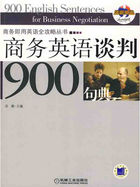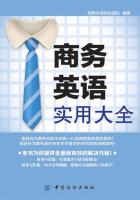Before we begin this examination,I would like you to imagine a national coin-flipping contest. Let’s assume we get 225 million Americans up tomorrow morning and we ask them all to wager a dollar. They go out in the morning at sunrise,and they all call the flip of a coin. If they call correctly,they win a dollar from those who called wrong. Each day the losers drop out,and on the subsequent day the stakes build as all previous winnings are put on the line. After ten flips on ten mornings,there will be approximately 220,000 people in the United States who have correctly called ten flips in a row. They each will have won a little over $1,000.
Now this group will probably start getting a little puffed up about this,human nature being what it is. They may try to be modest,but at cocktail parties they will occasionally admit to attractive members of the opposite sex what their technique is,and what marvelous insights they bring to the field of flipping.
Assuming that the winners are getting the appropriate rewards from the losers,in another ten days we will have 215 people who have successfully called their coin flips 20 times in a row and who,by this exercise,each have turned one dollar into a little over $1 million. $225 million would have been lost,$225 million would have been won.
By then,this group will really lose their heads. They will probably write books on“How I turned a Dollar into a Million in Twenty Days Working Thirty Seconds a Morning.”Worse yet,they’ll probably start jetting around the country attending seminars on efficient coin-flipping and tackling skeptical professors with,“If it can’t be done,why are there 215 of us?”
By then some business school professor will probably be rude enough to bring up the fact that if 225 million orangutans had engaged in a similar exercise,the results would be much the same—215 egotistical orangutans with 20 straight winning flips.
One quick example:The Washington Post Company in 1973 was selling for $80 million in the market. At the time,that day,you could have sold the assets to any one of ten buyers for not less than $400 million,probably appreciably more. The company owned the Post ,Newsweek ,plus several television stations in major markets. Those same properties are worth $4 billion now,so the person who would have paid $400 million would not have been crazy.
第一章 The Speech About Lenovo (4)
Now,if the stock had declined even further to a price that made the valuation $40 million instead of $80 million,its beta would have been greater. And to people that think beta measures risk,the cheaper price would have made it look riskier. This is truly Alice in Wonderland. I have never been able to figure out why it’s riskier to buy $400 million worth of properties for $40 million than $80 million. And,as a matter of fact,if you buy a group of such securities and you know anything at all about business valuation,there is essentially no risk in buying $400 million for $80 million,particularly if you do it by buying ten $40 million piles of $8 million each. Since you don’t have your hands on the $400 million,you want to be sure you are in with honest and reasonably competent people,but that’s not a difficult job.
You also have to have the knowledge to enable you to make a very general estimate about the value of the underlying businesses. But you do not cut it close. That is what Ben Graham meant by having a margin of safety. You don’t try and buy businesses worth $83 million for $80 million. You leave yourself an enormous margin. When you build a bridge,you insist it can carry 30,000 pounds,but you only drive 10,000 pound trucks across it. And that same principle works in investing.
In conclusion,some of the more commercially minded among you may wonder why I am writing this article. Adding many converts to the value approach will perforce narrow the spreads between price and value. I can only tell you that the secret has been out for 50 years,ever since Ben Graham and Dave Dodd wrote Security Analysis ,yet I have seen no trend toward value investing in the 35 years that I’ve practiced it. There seems to be some perverse human characteristic that likes to make easy things difficult. The academic world,if anything,has actually backed away from the teaching of value investing over the last 30 years. It’s likely to continue that way. Ships will sail around the world but the Flat Earth Society will flourish. There will continue to be wide discrepancies between price and value in the marketplace,and those who read their Graham & Dodd will continue to prosper.
格雷厄姆与多德追求“价值远超过价格的安全保障”,这种证券分析方法是否已经过时?目前许多撰写教科书的教授认为如此。他们认为,股票市场是有效率的市场;换言之,股票价格已经充分反映了公司一切已知的事实以及整体经济情况:这些理论家认为,市场上没有价格偏低的股票,因为聪明的证券分析师将运用全部的既有资讯,以确保适当的价格。投资者能经年累月地击败市场,纯粹是运气使然。“如果价格完全反映既有的资讯,则这类的投资技巧将不存在。”一位现今教科书的作者如此写道。
或许如此!但是,我要提供一组投资者的绩效供各位参考,他们长期的表现总是超越标准普尔500种股价指数。即使是纯属巧合,这项假说至少也值得我们加以研究。研究的关键事实是,我早就熟识这些赢家,而且长年以来便视他们为超级投资者,最近的认知也有15年之久。缺少这项条件——换言之,如果我最近才从成千上万的记录中挑选几个名字,并且在今天早上提供给各位——我建议各位立即停止阅读本文。我必须说明,所有的这些记录都经过稽核。我必须再说明,我认识许多上述经理人的客户,他们长年以来所收取的支票确实符合既有的记录。
在进行研究之前,我要各位设想一场全国性的掷铜板大赛。我们假定,全美国2.25亿的人口在明天早晨起床时都掷出一枚一美元的铜板。在早晨太阳升起时,他们都走到门外掷铜板,并猜铜板的正反。如果猜对了,他们将从猜错者的手中赢得一美元。每天都有输家遭到淘汰,奖金则不断地累积。经过十个早晨的十次投掷之后,全美国约有2. 2万人连续十次猜对掷铜板的结果。每人所赢得的资金大约有1,000多美元。
现在,这群人可能会开始炫耀自己的战绩,此乃人的天性使然。他们可能保持谦虚的态度,但在鸡尾酒宴会中,他们偶尔会以此技巧吸引异性的注意,并炫耀其投掷铜板的奇异洞察力。
假定赢家都可以从输家手中得到适当的奖金,再经过十天,约有215个人连续20次猜对掷铜板的结果,每个人并赢得大约100万美元的奖金。输家总共付出2.25亿美元,赢家则得到2.25亿美元。
这时候,这群人可能完全沉迷在自己的成就中:他们可能开始著书立说:“我如何每天早晨工作30 秒,而在20天之内将一美元变成100万美元。”更糟糕的是,他们会在全国各地参加讲习会,宣扬如何有效地投掷铜板,并且反驳持怀疑态度的教授说,“如果这是不可能的事,为什么会有我们这215个人呢?”
但是,某商学院的教授可能会粗鲁地提出一项事实,如果2.25亿只猩猩参加这场大赛,结果大致上也是如此——有215只自大的猩猩将连续赢得20次的投掷。
……















